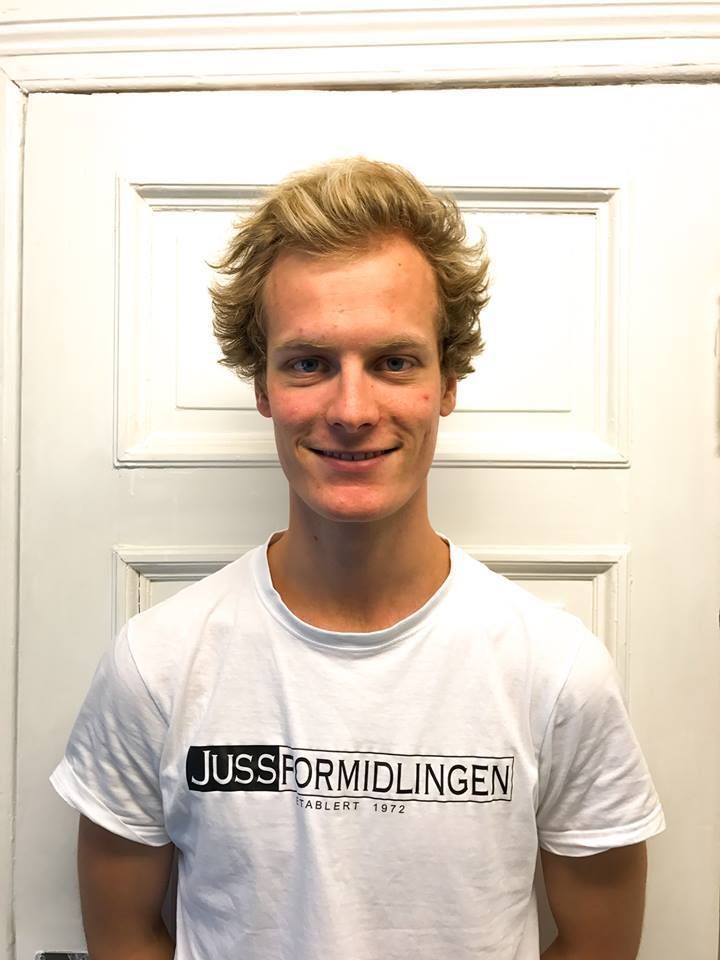Av ELSA: Adele Sofie Skogmo, Emma Helene Husebæk og Maria Jørgensen
•
12. desember 2025
Klimakrise, krig og miljøødeleggelser dominerer nyhetsbildet som aldri før. Den globale bevisstgjøringen rundt klimakrisen kan spores til én enkelt handling: da en svensk skoleelev, Greta Thunberg satte seg foran Riksdagen med budskapet «Skolstrejk för klimatet». Dette utløste en verdensomspennende bølge av klimastreiker og mobilisering, og har bidratt til at klima- og miljøspørsmål har fått en sentral plass i den offentlige debatten. I det politiske landskapet diskuteres virkemidler som karbonskatt, plastforbud og regulering av klimautslipp. Likevel overses ofte en spesielt brutal miljøødeleggelse: den bevisste og strategiske utslettelsen av naturressurser som ledd i militære operasjoner eller kommersiell utnyttelse. Dette reiser en rekke komplekse rettslige spørsmål, særlig innenfor folkeretten og miljøretten, hvor begreper som ecocide – miljøødeleggelse som forbrytelse – stadig oftere trekkes inn i diskusjonen om en utvidelse av det internasjonale strafferettssystemet. Begrepet ecocide ble første gang brukt av biologen Arthur Galston på 1970-tallet for å beskrive den omfattende miljøødeleggelsen som fulgte av USAs bruk av sprøytemiddelet Agent Orange under Vietnamkrigen. Galston uttrykte bekymring for de langsiktige økologiske konsekvensene av militær taktikk som bevisst ødelegger naturressurser. Begrepet som på norsk ofte kalt økodrap, stammer fra en sammensetning av det greske ordet «oikos» (som betyr hjem eller habitat) og det latinske ordet «cide» (drepe), og er utformet etter samme modell som Rafael Lemkins begrep genocidefra 1944. Ecocide er et begrep som bokstavelig betyr å «drepe vårt hjem». Per i dag regulerer den obskure bestemmelsen omfattende angrep på økosystemer med hensikt om å undergrave fienders mulighet til å overleve. Miljørettens sovende bestemmelse Ecocide som forbrytelse er ikke helt fremmed i folkeretten. Roma-vedtektene inneholder nemlig en nokså obskur bestemmelse om dette. Den fastslår at krigsforbrytelser også omfatter det å “forsettlig iverksette et angrep med kunnskap om at et slikt angrep vil forårsake [...] omfattende, langvarige og alvorlige skader på naturmiljøet, som klart ville være for omfattende i forhold til den forventede konkrete og umiddelbare samlede militære fordel”.1 Det er likevel ingen stater som har blitt dømt for slike lovbrudd i den internasjonale straffedomstolen, ICC, noe som tyder på at bestemmelsen ikke gir et effektivt vern mot miljøforbrytelser. Noe må gjøres, og forskere peker på to scenarioer. Enten må den eksisterende regelen endres, eller så må det opprettes en ny bestemmelse om alvorlige miljøforbrytelser (ecocide) i Roma-vedtektene. Formålet med denne artikkelen er å belyse styrker og svakheter i disse to scenarioene, og deretter vurdere hva som er mest hensiktsmessig. Utfordringen med den eksisterende artikkel 8 i Roma-vedtektene er at den bare gjelder i internasjonalt væpnede konflikter. Det vil si at alvorlige miljøforbrytelser begått i fredstid ikke kan straffeforfølges. Et relevant eksempel er den radioaktive forurensningen etter kjernekraftulykken i Fukushima i 2011, som har drevet mot vestkysten av Nord-Amerika og ført til bestråling av seler i Alaska. Det er derfor tatt til orde for at en ny bestemmelse om ecocide skal gjelde i fredstid så vel som i krig. Eksperter som Polly Higgins (1968-2019) har tatt til orde for at terskelen for ecocide er for høy til å kunne oppnå ønsket resultat i retten. De peker på at intensjonskravet «forsettlig» er for strengt, og at det istedenfor bør innføres et objektivt ansvar uavhengig av hensikten bak lovbruddet eller om det skyldes uaktsomhet.2 Det er som sagt ingen stater som har blitt dømt for ecocide i ICC. Vi ser likevel en rekke hendelser i verden som fører til alvorlige ødeleggelser av naturmiljøet, uten at de ansvarlige kan dømmes for ecocide. Den russiske krigføringen i Ukraina ledet i juni 2022 til sprengingen av Kakhovademningen, og omtales som den verste miljøkatastrofen i Europa siden Tsjernobyl. Omtrent 90 % av reservoaret ble tømt, noe som forårsaket enorme oversvømmelser med katastrofale følger for befolkningen og økosystemet.3 I Etiopia har myndighetenes 30 år lange iherdige innsats med å gjenopprette grøntområder blitt reversert som følge av Tigray-krigen fra 2020 til 2022. Krig og ekstrem sult førte til at naturressursene ble utnyttet til mat og inntekt, noe som forverret miljøskadene. I dag er nedskogningen tydelig synlig på satellittbildene. Som vi kan se er følgene av handlingene omfattende, langvarig og alvorlig skade på naturmiljøet. Hovedintensjonen er ofte den militære fordelen eller økonomisk profitt, og miljøskadene blir rett og slett «collateral damage». Dersom beviskravene senkes, blir det enklere å straffe miljøforbrytelser. Baksiden er at regelen vil miste sin opprinnelige tyngde og moralske betydning. Opprettelsen av den femte forbrytelsen (ecocide) i Roma-vedtektene må gjenspeile de foregående, herunder forbrytelser mot menneskeheten og folkemord. Intensjonskravet er dermed uunnværlig. Det kan likevel argumenteres for å senke terskelen, slik at intensjonen bare må påvises objektivt. Et steg i riktig retning? I juni 2021 la et uavhengig ekspertpanel fram en definisjon av ecocide, som bakgrunn for opprettelsen av en femte forbrytelse i Roma-vedtektene 4. Definisjonen utgjør en stor forandring fra den eksisterende artikkel 8. Hensikten er å gi miljøet et selvstendig rettslig vern i folkeretten. Definisjonens virkeområde omfatter både krig og fredstid, slik at stater og selskaper kan holdes ansvarlige uansett situasjon. Definisjonen inneholder et mindre strengt intensjonskrav. Det stilles ikke krav om forsett, heller at handlingen er ulovlig eller hensynsløs. Beviskravet er også senket, slik at det er tilstrekkelig å påvise en betydelig sannsynlighet for alvorlige miljøskader. Med andre ord foreligger det ecocide dersom den ansvarlige har utført ulovlige eller hensynsløse handlinger med kunnskap om risikoen for slik skade. Det uavhengige ekspertpanelet foreslår at skadekriteriet endres, slik at det må foreligge alvorlig og enten utbredt eller langvarig skade på miljøet. Det er også tatt til orde for å fjerne forholdsmessighetskravet, som innebærer at all ødeleggelse av naturen regnes som ecocide uavhengig av en eventuell militær fordel eller økonomisk profitt. Et rettslig maraton Å endre Roma-statuttene er ikke bare et juridisk spørsmål, det er også et politisk betent spørsmål. Før en slik endring kan finne sted, må den gjennom en omfattende og krevende prosess fastsatt i traktatens artikkel 121. Historien viser tydelig at endringer hører til sjeldenhetene. En av få eksempler vi har, er tilføyelsen av aggresjon som en internasjonal forbrytelse, et gjennombrudd som i seg selv tok flere tiår å realisere. Den rettslige prosessen initieres når en stat formelt fremmer et forslag til FNs generalsekretær, som deretter distribuerer det til alle medlemsstatene. Den videre framgangsmåten er ulik avhengig av forslagets innhold, men vil innebære langtrekkende diskusjoner og rådgivning fra ulike instanser. Til slutt må forslaget vedtas med to tredjedels flertall. Til tross for at dette allerede oppstiller en høy terskel, er det først etter vedtakelsen at den virkelige prøven begynner.5 For at endringen faktisk skal tre i kraft, må den ratifiseres av et tilstrekkelig antall medlemsstater. Dette er en lang og krevende prosess som involverer nasjonale parlamenter, eventuelle lovendringer og politiske spørsmål6. Mange stater vil stille seg passive. Suverenitet, økonomiske interesser og frykten for økt rettslig ansvar gjør at flere land motsetter seg enhver utvidelse av domstolens myndighet. Med andre ord, dette er ingen rask endring, enten det gjelder en endring av den gjeldende bestemmelsen, eller tilleggelsen av en ny bestemmelse. Etter alt å dømme snakker vi om et tidsperspektiv på mange år, kanskje flere tiår. Mer enn bare juss – et spørsmål om prinsipp Til tross for de juridiske og politiske hindringene er symbolverdien av å få økodrap inn i Roma-statuettene stor. I dag står verdens miljø tilnærmet ubeskyttet på internasjonalt nivå. Multinasjonale selskaper kan ødelegge økosystemer på tvers av landegrenser uten reelle konsekvenser. Nasjonale lover har begrenset rekkevidde, de kan ikke holde enkeltpersoner eller selskaper ansvarlige når ødeleggelsen skjer utenfor egen jurisdiksjon. En tilleggelse i Roma-statuttene vil derfor markere et skifte. Dersom økodrap blir anerkjent som en femte romastatuett som selvstendig internasjonal forbrytelse, vil miljøødeleggelse ikke lenger bare være et politisk eller moralsk spørsmål, det vil bli et rettslig og straffbart overgrep på linje med folkemord og krigsforbrytelser. En slik status vil sende et tydelig signal til verdens ledere, selskaper og enkeltpersoner: Ødeleggelse av naturen er ikke lenger akseptabelt. En endring av bestemmelser i art. 8 slik at terskelen for å bli dømt senkes, kan fungere med en liknende effekt, men kun dersom endringen faktisk fører til domfellelser. Men for at noe skal skje, må noen handle. En stat må ta initiativ. I dag har flere land uttrykt politisk støtte til forslaget om å inkludere økodrap i Roma-statuttene, men de færreste har tatt konkrete steg. Per nå er det kun Vanuatu, sammen med Fiji og Samoa, som i september 2024 formelt fremmet forslaget om endring7. Dette viser at kampen for økodrap som internasjonal forbrytelse fortsatt er drevet av små, sårbare nasjoner som allerede opplever konsekvensene av global miljøødelegging på nært hold. Litteraturliste: [1] Roma-vedtektene om Den internasjonale straffedomstol vedtatt 17. juli 1988 Artikkel 8 (2)(b)(iv) [2] Damien Gayle, The Guardian: What is ecocide and could it become a crime under international law?: https://www.theguardian.com/environment/2025/may/28/what-is-ecocide-and-could-it-become-a-under-international-law publisert31.05.25. [3] Obi Anyadike, The New Humanitarian: From ecocide to resource-stripping: War’s collateral damage on the planet : https://www.thenewhumanitarian.org/feature/2024/08/15/ecocide-resource-stripping-wars-collateral-damage-planetpublisert 15.08.2024. [4] Stop Ecocide Foundation: https://www.stopecocide.earth/legal-definition (5) Roma-vedtektene om Den internasjonale straffedomstol vedtatt 17. juli 1988 Artikkel 8 , Art 121 (6)Harvey, Fiona: Pacific islands submit court proposal for recognition of ecocide as a crime: https://www.theguardian.com/law/article/2024/sep/09/pacific-islands-ecocide-crime-icc-proposal Publisert 9. september 2024 (7.) Kauffman, Craig, Catherine Haas, Alex Putzer, Shrishtee Bajpai, Kelsey Leonard, Elizabeth Macpherson, Pamela Martin, Alessandro Pelizzon & Linda Sheehan. Eco Jurisprudence Monitor. V2. 2025. Distributed by the Eco Jurisprudence Monitor.https://ecojurisprudence.org/initiatives/vanuatu-fiji-and-samoa-proposed-amendment-to-the-rome-statute-to-include-a-crime-of-ecocide/.


